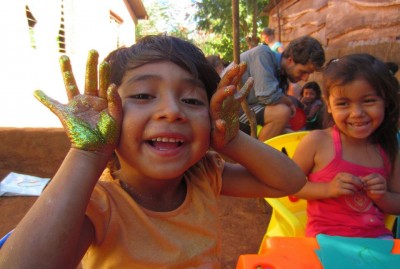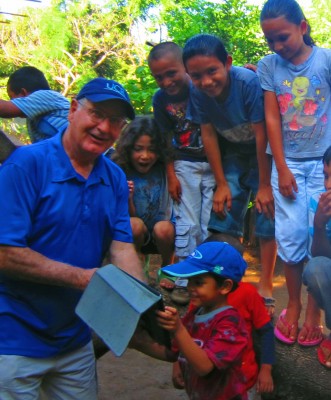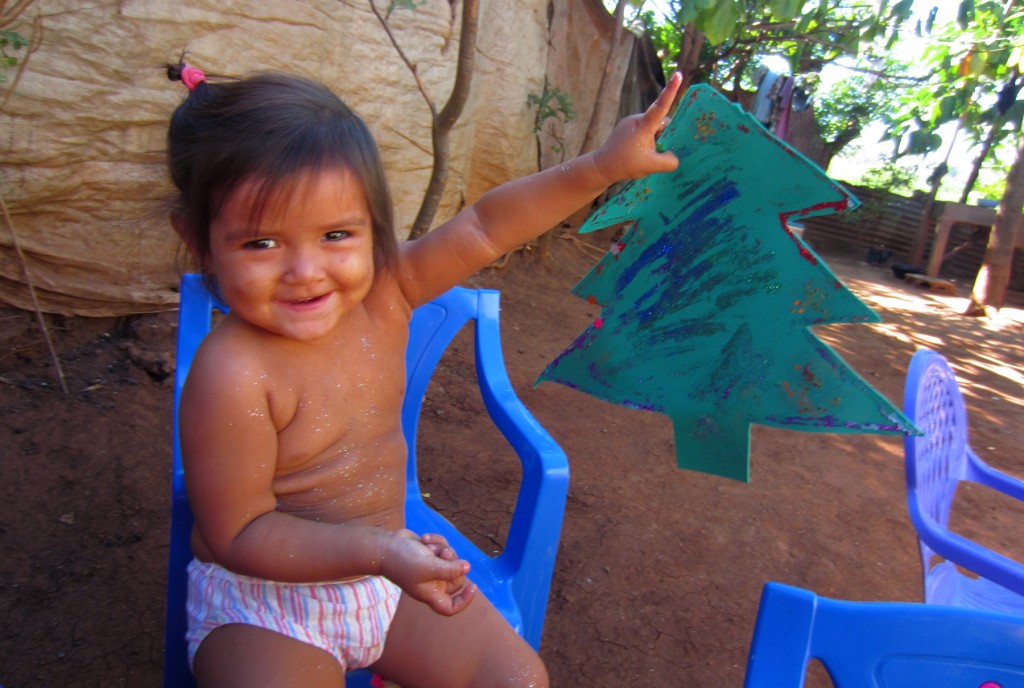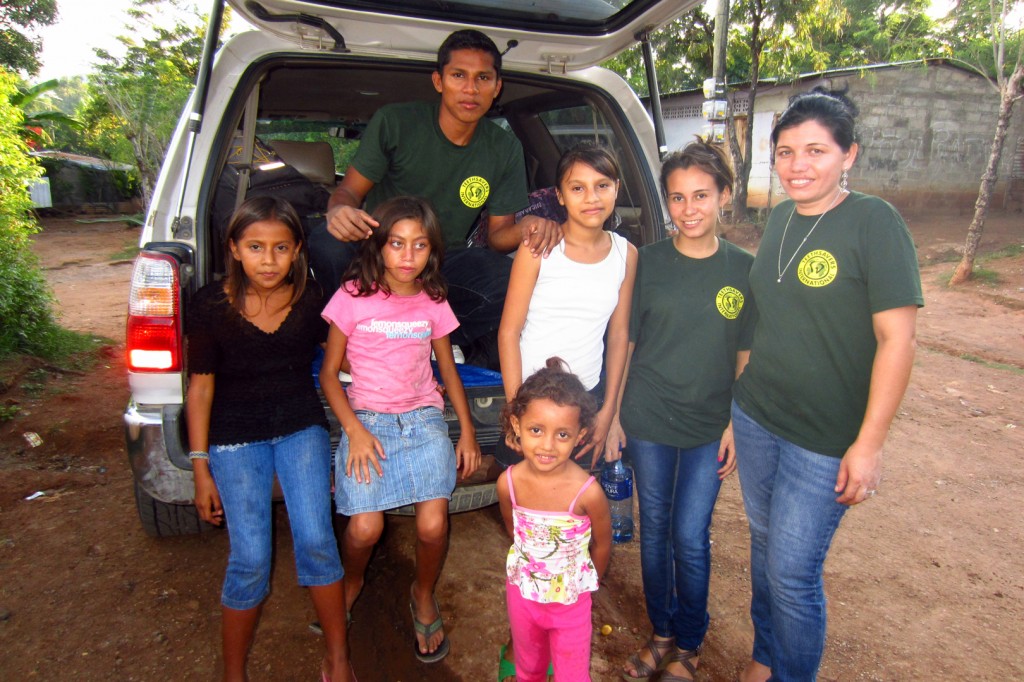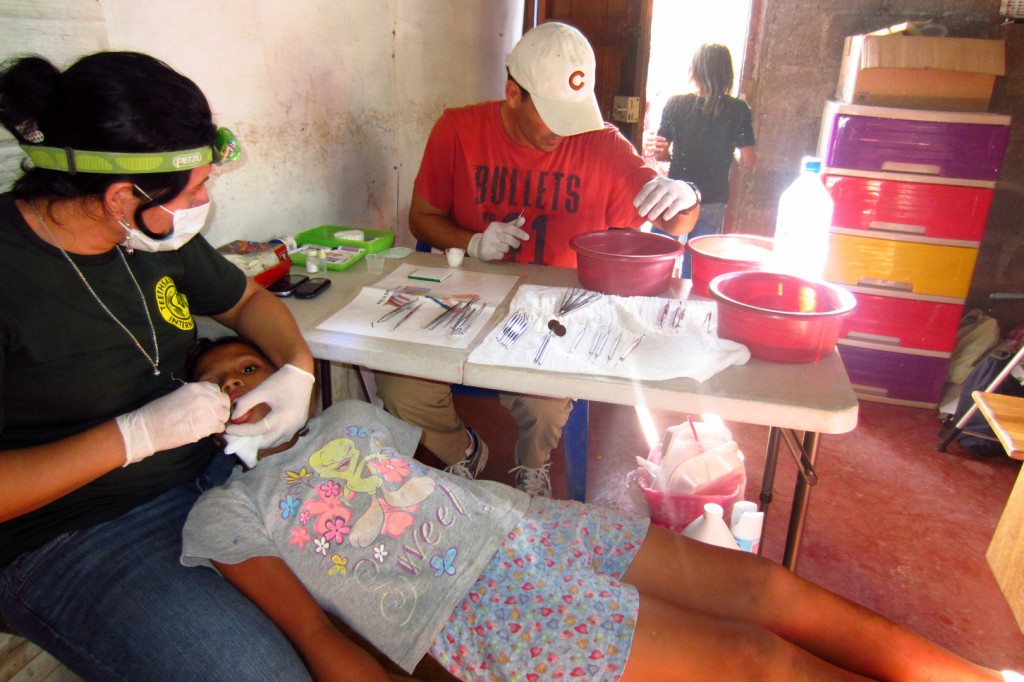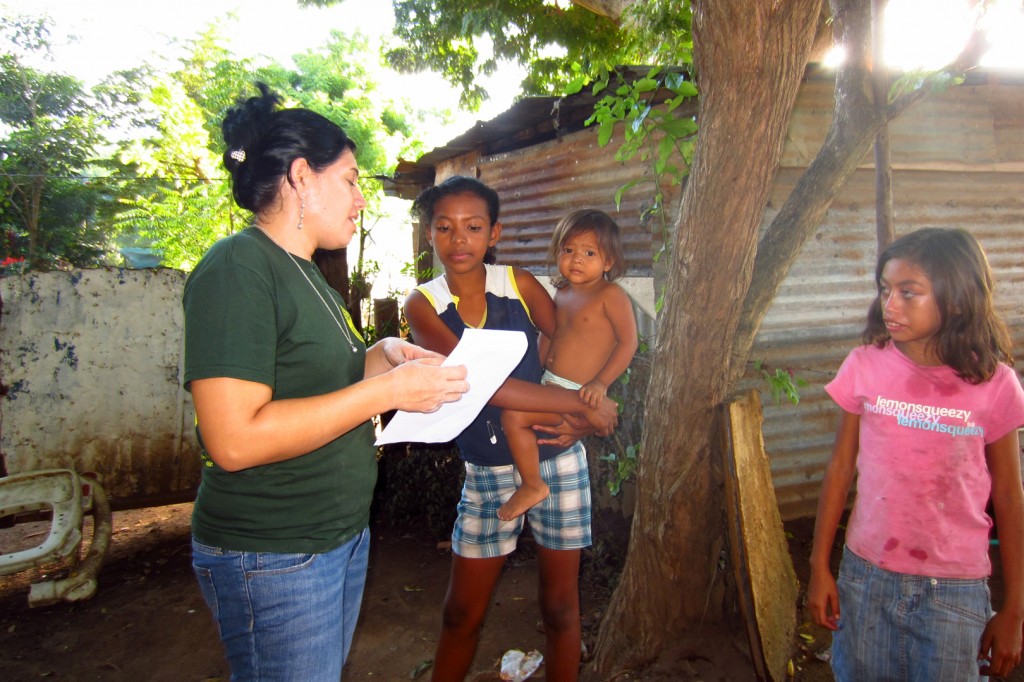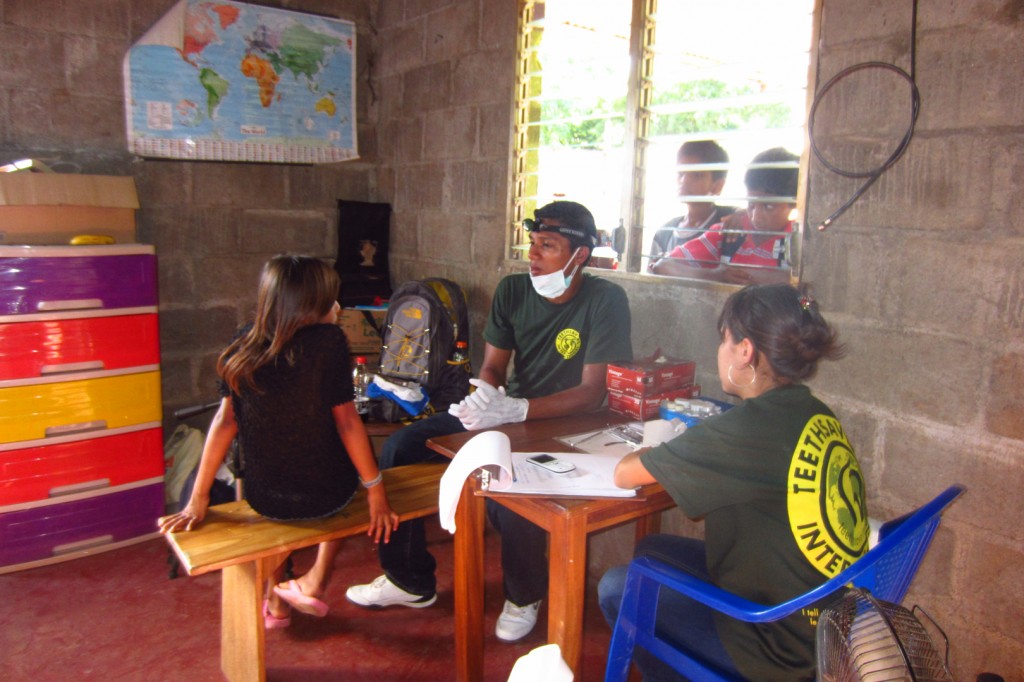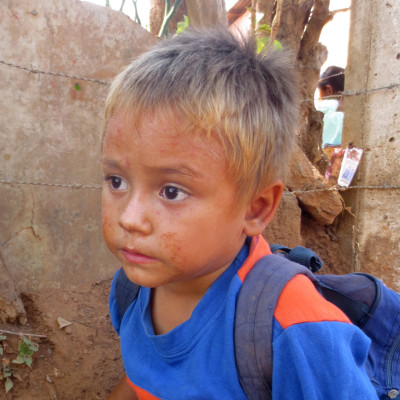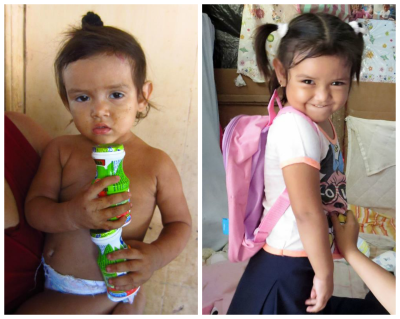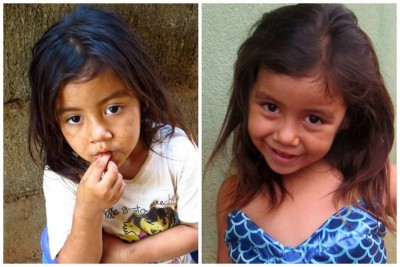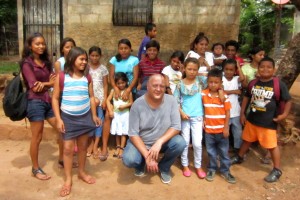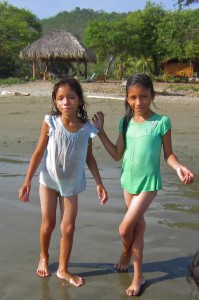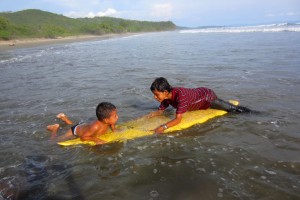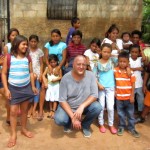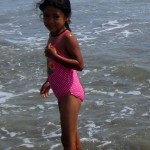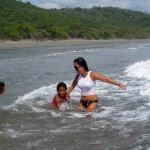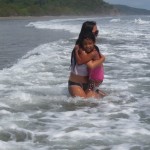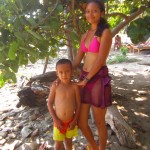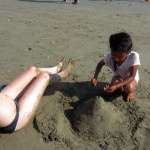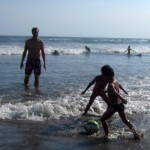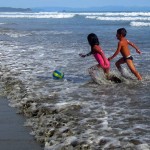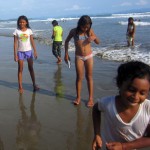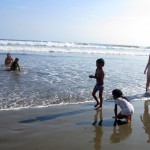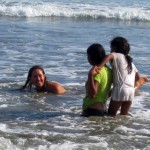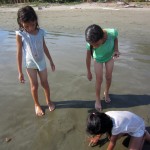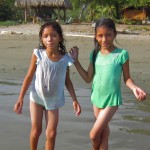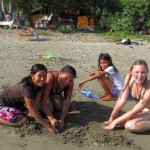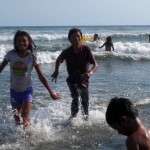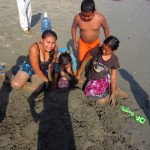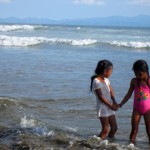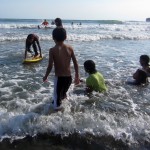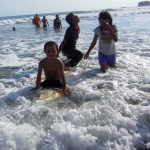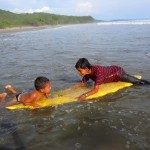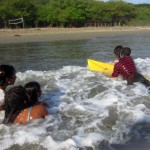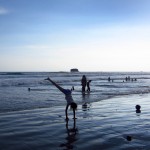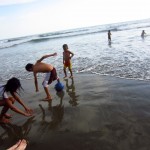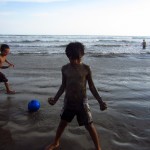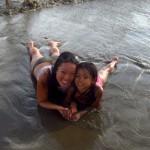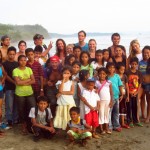The Nicaraguan people have a very festive culture, with many celebrations and fiestas throughout the year, Christmas being no exception. The staff and volunteers of Education Plus were lucky and blessed to be a part of the Nicaraguan Christmas celebration this year for the first time.
It was a labor of love to plan and present the students and their families with gifts on Christmas Eve and a big party on Christmas Day. The month of December was spent making a list, checking it twice, and then collecting Christmas donations of toys, clothing, school supplies, and money to purchase additional gifts and food for our celebration. On the 23rd, eight volunteers, along with Monica and Jim, gathered at Jim’s house in Granada for a gift wrapping party. What was thought would take just a couple of hours ended up taking 6 hours to wrap almost 200 gifts for the boys and girls that attend Education Plus.
On Christmas Eve, early in the afternoon, the crew of volunteers transported all of the gifts and supplies for the party to the schoolhouse in Pantanal aboard an open tour bus provided by Granada Tours. With everyone hanging off of the side of bus singing “Feliz Navidad” the crew was greeted with cheers and laughter by many of the students at the schoolhouse. Some gifts were given at the school, while others were delivered by volunteers to the families’ homes. For some children this might have been the first time that they had a received an individual gift at Christmas. Some didn’t even know how to unwrap their gifts, afraid to tear the paper they were wrapped in. Others cried with joy, while some were very quiet.
Christmas morning found the staff and volunteers scurrying around the market in town to gather the fresh chicken, rice, and vegetables for the Christmas meal, Arroz a la Valencia, which several of the local parents helped us cook.
The Christmas Fiesta was a grand success! Donor sponsorship provided funds to hire a party company which provided music, a “bounce house”, and a cotton candy machine. There was face painting, 3 piñatas, and a whole lot of dancing. It was a day that the children will never forget! Everyone had plenty to eat and all of the children and their parents left with big smiles on their faces, not to mention a lot of creative paint designs on their faces too!!
Thank you to to all of the wonderful donors who made these holiday celebrations possible. And a special heartfelt thanks to the selfless, hardworking volunteers: Camilla, Lisanne, Verena, Sabrina, John, Brandee, Melissa, Eduardo, Amanda, Matt, Ashley, Scott, Marty, Pip, Diane, Esther, and her granddaughter Rowan. Education Plus is blessed by you and your efforts and this year’s Pantanal Christmas wouldn’t have been the success it was without you!!
For more photos see our CHRISTMAS ALBUM ON FACEBOOK
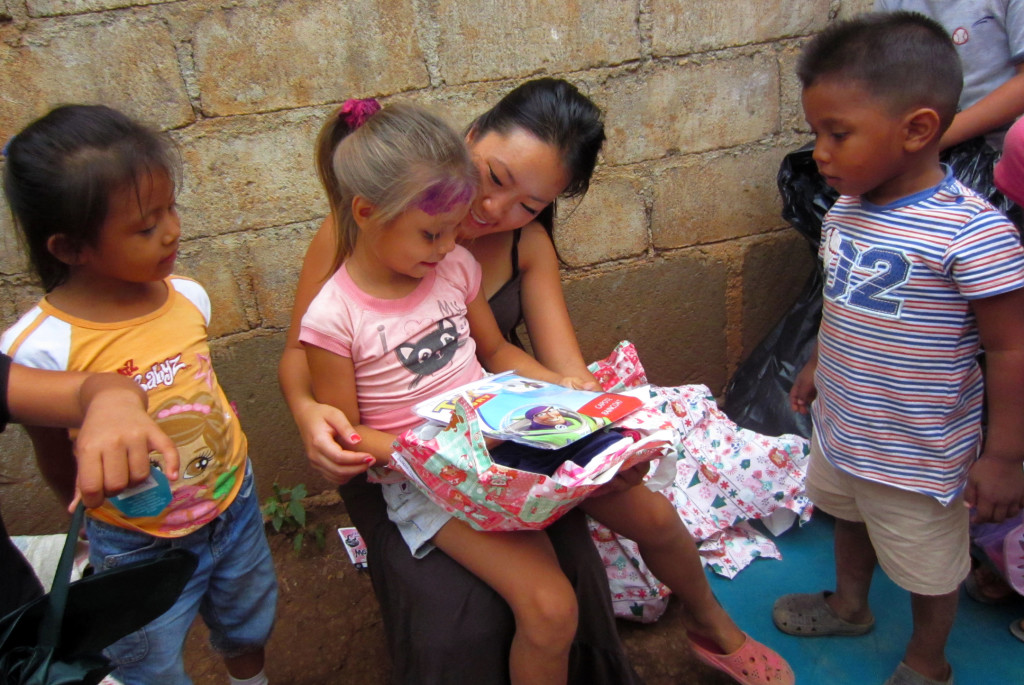
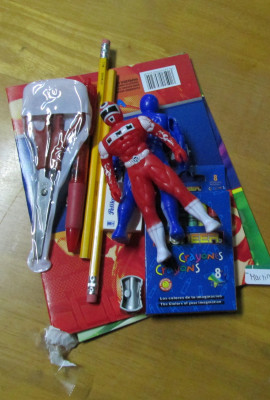
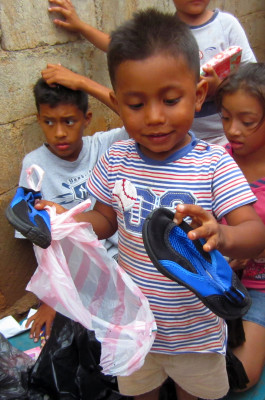
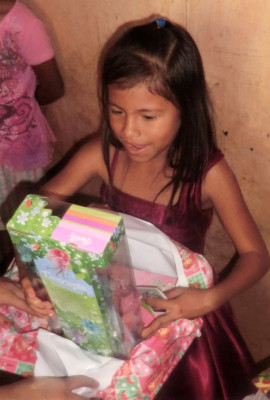
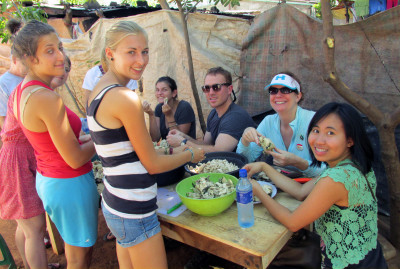
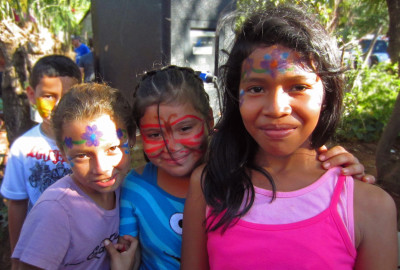
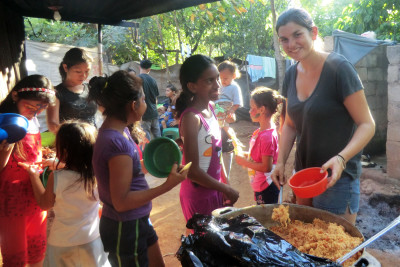
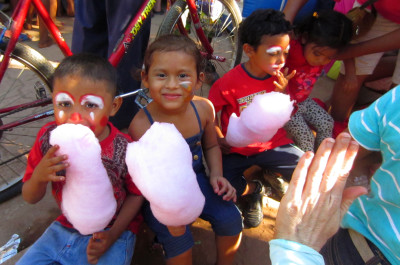

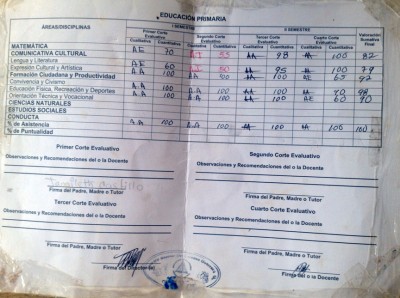
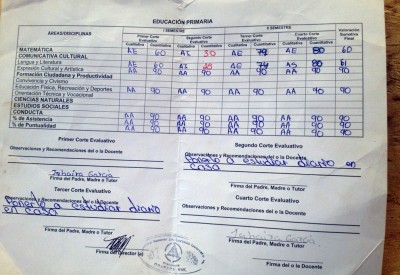
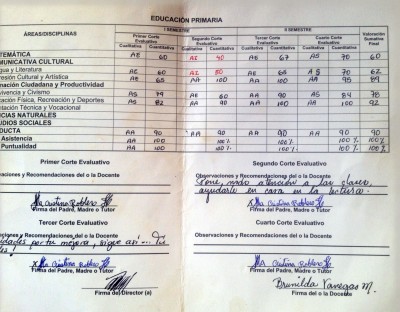

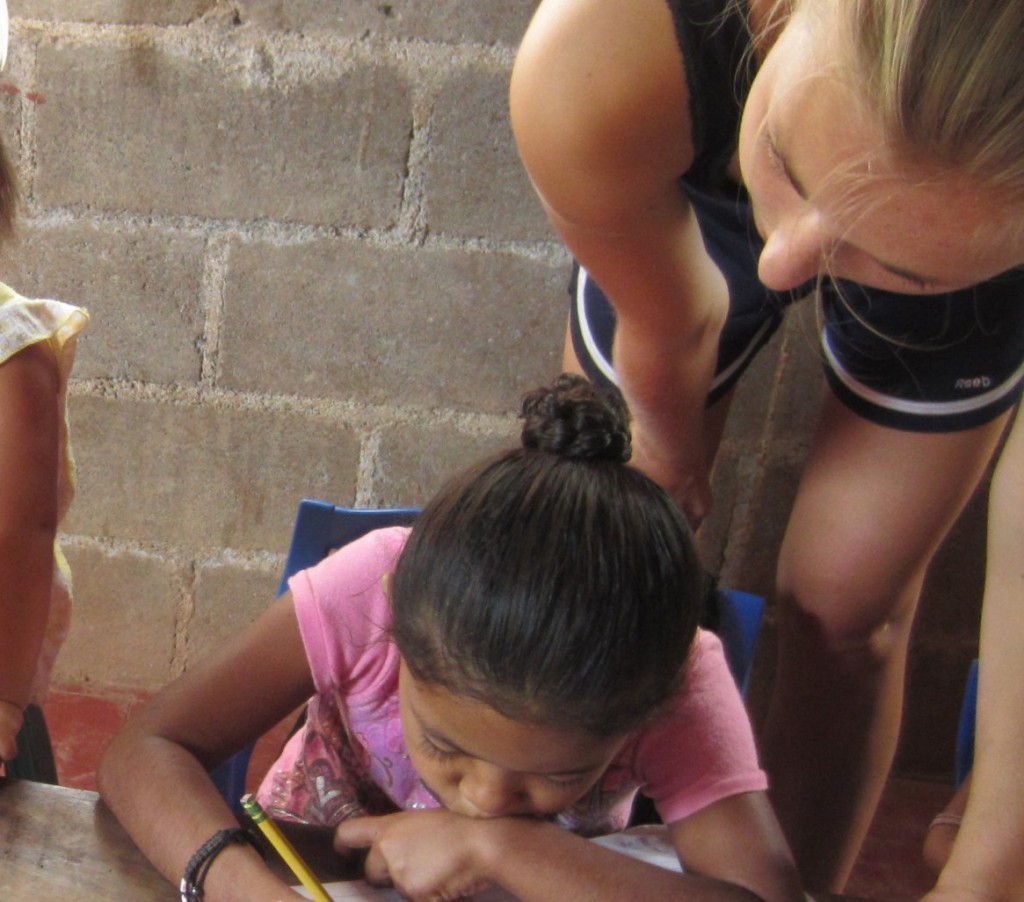
 What Does Change Really Mean for the Children of Pantanal?
What Does Change Really Mean for the Children of Pantanal?
![IMG_0137[1]](http://eduplusnicaragua.org/wp-content/uploads/2012/12/IMG_01371-1024x768.jpg)
